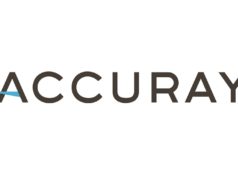The first Renishaw neuromate stereotactic robot-assisted procedure in Scotland has taken place at The Royal Hospital for Sick Children, Edinburgh.
The Royal Hospital for Sick Children, Edinburgh, has carried out the first neuromate stereotactic robot-assisted neurosurgery procedure in Scotland. The case was a paediatric stereoelectroencephalography (SEEG) carried out on an 8-year-old female patient suffering from severe epilepsy.
SEEG uses intracerebral electrodes to measure electrical signals in the brain. During the procedure in Edinburgh, 15 electrodes were inserted into the patient’s brain to gather data and map brain activity. By doing this, leading neurosurgeons Jothy Kandasamy and Drahoslav Sokol were able to identify the region responsible for generating the surges in the electrical signals which cause epileptic seizures.
The Scottish National Epilepsy Surgery Service team at The Royal Hospital for Sick Children Edinburgh is led by consultant paediatric neurologist Ailsa McLellan. On this first procedure using a neuromate robot, she commented: “Accurate neurosurgical targeting is essential to successful patient outcomes and with the assistance of the neuromate robotic system our national epilepsy service neurosurgeons, Sokol and Kandasamy, were able to plan and implant these 15 electrodes deep into the brain with absolute precision and safety.”
The neuromate stereotactic robot’s role in the procedure was to support the instrumentation and aid the neurosurgeons to align the electrodes according to pre-planned trajectories. Carrying out this type of procedure with the assistance of a robot can significantly reduce operating time compared with traditional methods.











